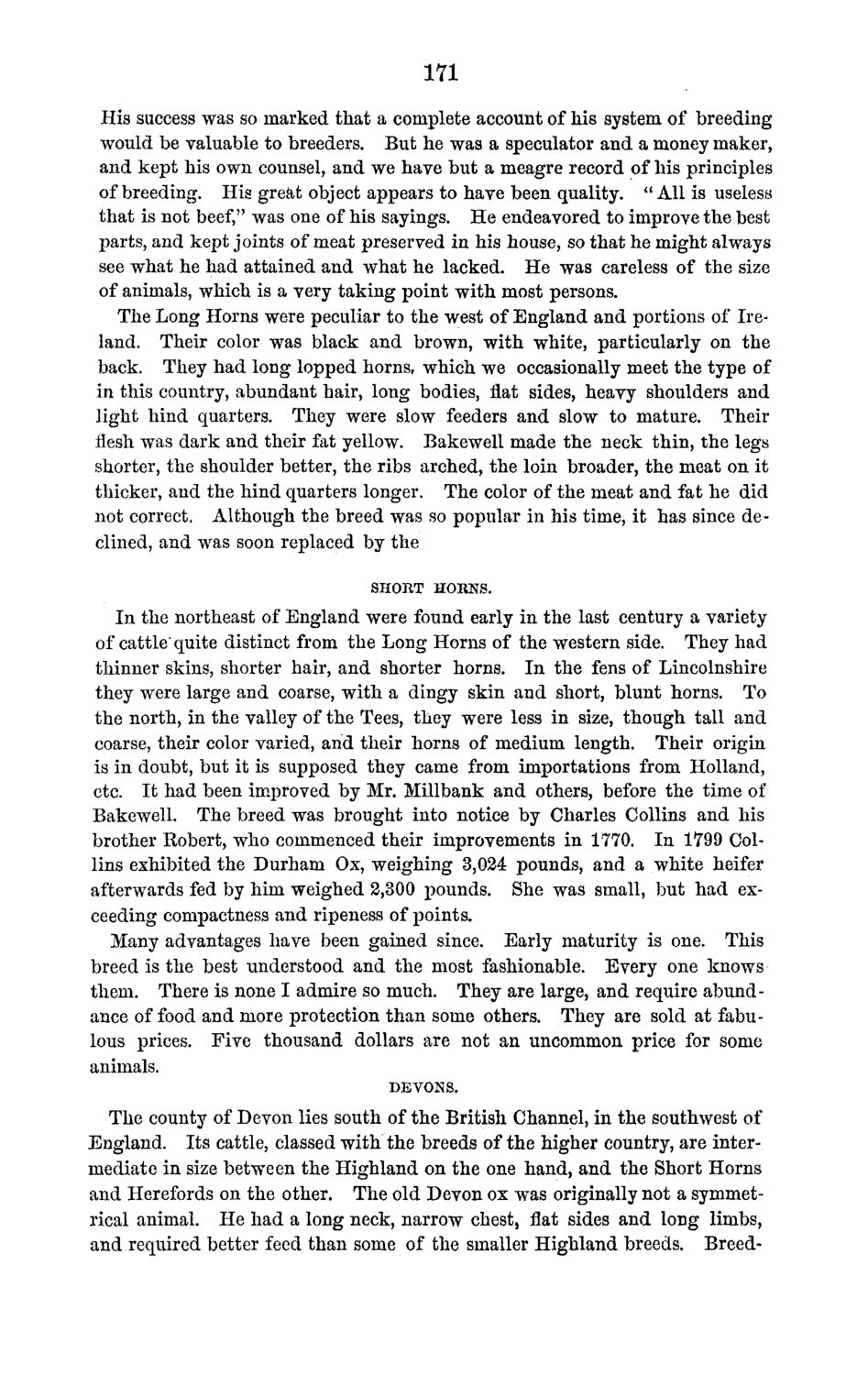| |
| |
Caption: Board of Trustees Minutes - 1870
This is a reduced-resolution page image for fast online browsing.

EXTRACTED TEXT FROM PAGE:
m His success was so marked that a complete account of his system of breeding would be valuable to breeders. But he was a speculator and a money maker, and kept his own counsel, and we have but a meagre record of his principles of breeding. His great object appears to have been quality. " All is useless that is not beef," was one of his sayings. He endeavored to improve the best parts, and kept joints of meat preserved in his house, so that he might always see what he had attained and what he lacked. He was careless of the size of animals, which is a very taking point with most persons. The Long Horns were peculiar to the west of England and portions of Ireland. Their color was black and brown, with white, particularly on the back. They had long lopped horns, which we occasionally meet the type of in this country, abundant hair, long bodies, flat sides, heavy shoulders and light hind quarters. They were slow feeders and slow to mature. Their flesh was dark and their fat yellow. Bakewell made the neck thin, the legs shorter, the shoulder better, the ribs arched, the loin broader, the meat on it thicker, and the hind quarters longer. The color of the meat and fat he did not correct. Although the breed was so popular in his time, it has since declined, and was soon replaced by the SHORT HORNS. In the northeast of England were found early in the last century a variety of cattle*quite distinct from the Long Horns of the western side. They had thinner skins, shorter hair, and shorter horns. In the fens of Lincolnshire they were large and coarse, with a dingy skin and short, blunt horns. To the north, in the valley of the Tees, they were less in size, though tall and coarse, their color varied, and their horns of medium length. Their origin is in doubt, but it is supposed they came from importations from Holland, etc. It had been improved by Mr. Millbank and others, before the time of Bakewell. The breed was brought into notice by Charles Collins and his brother Robert, who commenced their improvements in 1770. In 1799 Collins exhibited the Durham Ox, weighing 3,024 pounds, and a white heifer afterwards fed by him weighed 2,300 pounds. She was small, but had exceeding compactness and ripeness of points. Many advantages have been gained since. Early maturity is one. This breed is the best understood and the most fashionable. Every one knows them. There is none I admire so much. They are large, and require abundance of food and more protection than some others. They are sold at fabulous prices. Five thousand dollars are not an uncommon price for some animals. DEVONS. The county of Devon lies south of the British Channel, in the southwest of England. Its cattle, classed with the breeds of the higher country, are intermediate in size between the Highland on the one hand, and the Short Horns and Herefords on the other. The old Devon ox was originally not a symmetrical animal. He had a long neck, narrow chest, flat sides and long limbs, and required better feed than some of the smaller Highland breeds. Breed-
| |